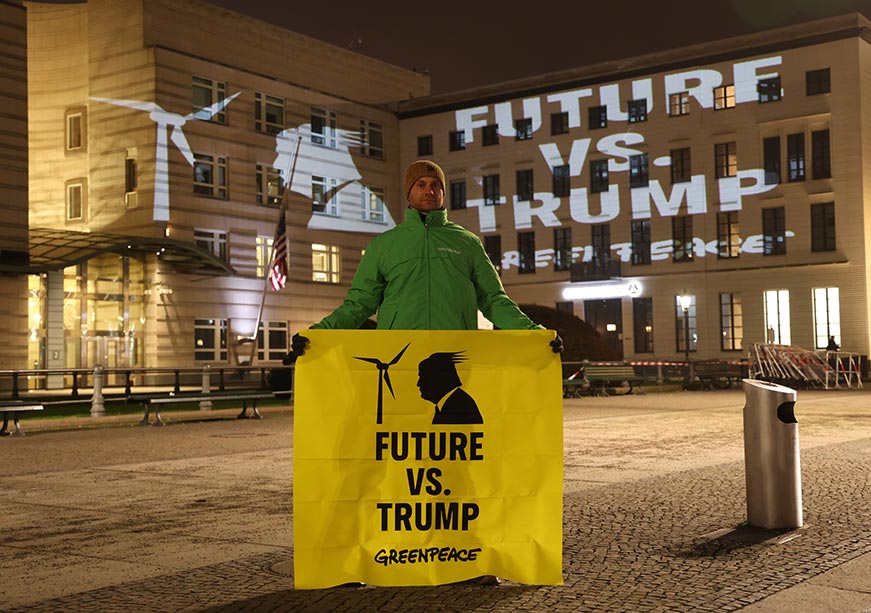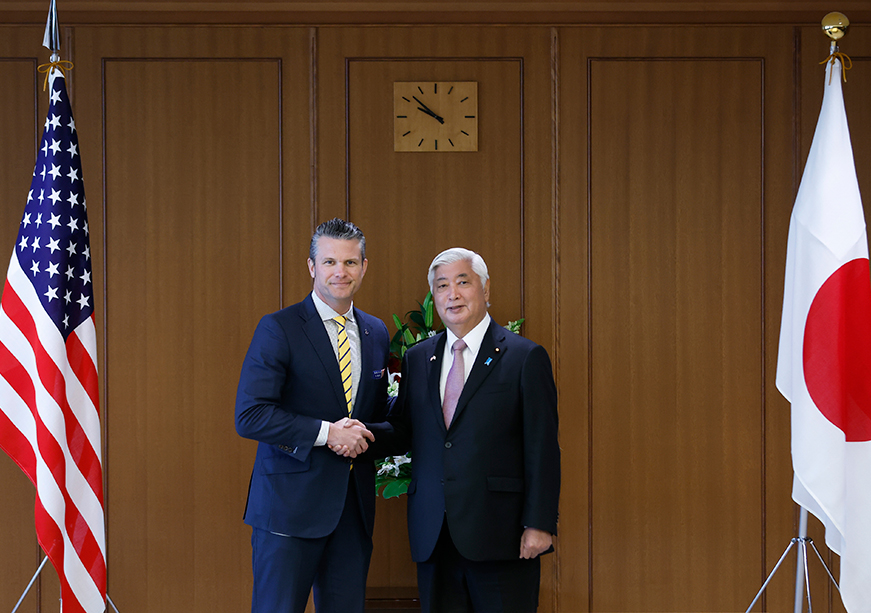
Image Source: Getty
The energy relationship between India and the United States (US) has long been characterised by a blend of strategic collaboration and policy fluctuations. Historically, while both nations have engaged across various energy sectors, clean energy partnerships have often faced challenges due to shifting political priorities in Washington and New Delhi. This brief examines the key areas of divergence and convergence in India-US energy ties and the potential pathways for future collaboration.
A pivotal executive order declared a national energy emergency, streamlining fossil fuel production by dismantling regulatory barriers, and reinforcing the administration’s commitment to hydrocarbons.
Policy Fluctuations
India-US clean energy collaboration has long been shaped by shifting political tides. During President Trump’s first term, boosting fossil fuel exports to India was considered a priority, aligning with the administration’s “energy dominance” agenda. This approach was reversed under Biden, who prioritised renewable energy cooperation. However, Trump’s second term reignited the fossil fuel focus, with executive orders expanding federal lands for oil and gas leasing, lifting Liquefied Natural Gas (LNG) terminal restrictions, and pausing new wind projects. While bolstering short-term energy trade, these measures cast a shadow over the sustainability of clean energy efforts.
A pivotal executive order declared a national energy emergency, streamlining fossil fuel production by dismantling regulatory barriers, and reinforcing the administration’s commitment to hydrocarbons. While this policy shift may provide immediate economic advantages, it complicates India’s path to achieving its ambitious target of 500 GW of non-fossil fuel capacity by 2030. For India, the unpredictability of US energy policy raises critical questions about long-term reliability.
Beyond fossil fuels, India's growing crude oil imports from Russia present another point of divergence. While this pragmatic approach bolsters energy security, it may strain strategic trust with the US. Additionally, India's deepening LNG trade with the US, while beneficial for energy security, challenges its decarbonisation efforts. The increase in LNG exports to India, driven by competitive pricing and supply reliability, supports immediate energy needs but risks slowing India's clean energy transition.
Public concerns over nuclear safety and the financial risks associated with India's nuclear liability laws continue to deter foreign investment.
Another friction point is nuclear energy. The US-India 123 Civil Nuclear Agreement, reaffirmed during Modi's US visit, envisions US-designed reactors in India. However, stringent liability provisions under India’s Civil Liability for Nuclear Damage Act (CLNDA) have deterred private investment. While recent Budget announcements aim to attract foreign players, structural challenges such as high capital costs and land acquisition remain hurdles. Public concerns over nuclear safety and the financial risks associated with India's nuclear liability laws continue to deter foreign investment.
Areas of Alignment and Potential Commitments
Despite political fluctuations, several areas of cooperation remain strong. The US is a key player in India’s clean energy ambitions, contributing to investments in renewables, LNG, and critical minerals. The two countries align on the role of natural gas as a transition fuel, with long-term LNG contracts ensuring stable supply. The 20-year agreement between GAIL (India) Ltd and Sabine Pass Liquefaction LLC exemplifies this shared interest.
Technological innovation is another area of alignment. Collaborative research and development initiatives, such as the US-India Transforming the Relationship Utilizing Strategic Technology (TRUST) initiative further strengthen collaboration in critical minerals, semiconductors, and clean energy technologies.
Recognising the strategic importance of critical minerals, both nations are also boosting R&D collaboration and fostering investments across the entire value chain. India is seeking to upgrade its critical minerals deal with the U.S. into a full-fledged partnership to strengthen supply chains and unlock tax benefits for electric vehicles and batteries. Breaking China’s dominance in this sector requires a multifaceted strategy, including multilateral partnerships with Australia, Canada, and Japan, investments in domestic mineral exploration, and policy support to spur innovation. The QUAD alliance provides a crucial platform for regional cooperation in critical minerals, although differing national energy priorities may pose challenges.
India is seeking to upgrade its critical minerals deal with the U.S. into a full-fledged partnership to strengthen supply chains and unlock tax benefits for electric vehicles and batteries.
Moreover, commitment to technology transfer and localised manufacturing, alongside bilateral arrangements to mitigate liability concerns, offers a viable path forward. This approach could accelerate nuclear deployment, including advanced small modular reactors, helping India overcome infrastructure limitations and safety apprehensions.
Conclusion
India’s energy partnership with the US is a complex interplay of strategic alignment and competing priorities. While political volatility presents challenges, market-driven collaboration, technological advancements, and diversified partnerships provide stability. By strengthening its energy security through multilateral alliances and investing in critical minerals, India can hedge against uncertainty. The success of this partnership will depend on India's ability to balance immediate energy needs with its long-term sustainability goals. Ensuring policy predictability, fostering innovation, and embracing transitional fuels will be key. Ultimately, India's pursuit of strategic autonomy in energy decisions will shape the resilience of its partnership with the US in an evolving global landscape.
Manish Vaid is a Junior Fellow at Observer Research Foundation
The views expressed above belong to the author(s). ORF research and analyses now available on Telegram! Click here to access our curated content — blogs, longforms and interviews.




 PREV
PREV


